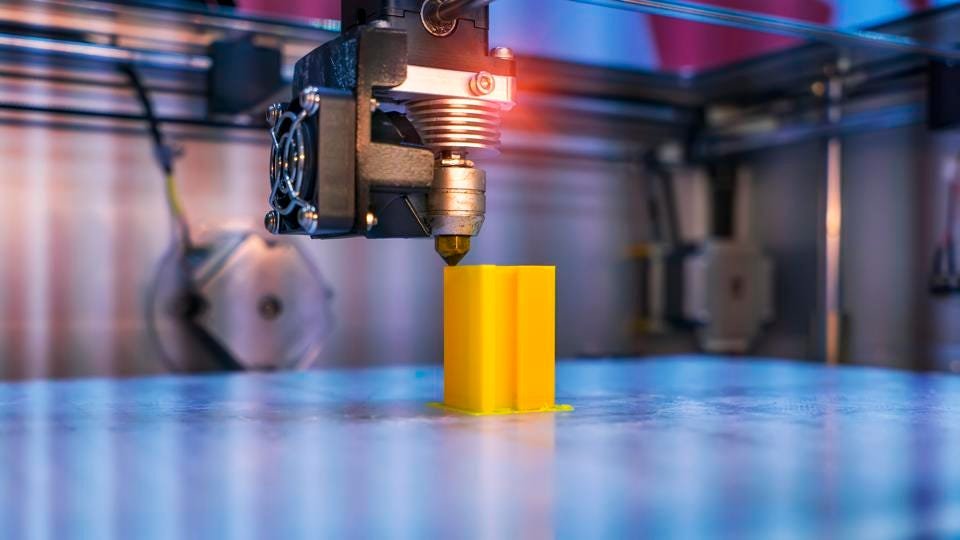
In the ever-evolving landscape of technology, 3D printing has emerged as a groundbreaking innovation, transforming manufacturing processes across industries. From prototyping to production, this technology is redefining how we design, create, and build. In this blog, we delve into the transformative power of 3D printers, exploring their applications, benefits, and future potential in revolutionizing manufacturing.
Key Applications of 3D Printing in Manufacturing
- Rapid Prototyping:
- Efficiency: 3D printing significantly reduces the time required to create prototypes, enabling faster product development cycles.
- Cost-Effectiveness: Businesses can produce multiple iterations of a design without the need for expensive molds or toolings.
- Custom Manufacturing:
- Personalization: From customized medical implants to tailored consumer products, 3D printing enables manufacturers to meet specific customer needs.
- On-Demand Production: Companies can produce items as needed, reducing inventory costs and waste.
- Tooling and Fixtures:
- 3D printing is used to create specialized tools, jigs and fixtures that streamline assembly lines and improve precision.
- End-Use Parts:
- Advanced 3D printers are capable of producing durable, high-quality parts for industries such as aerospace, automotive, and healthcare.
Advantages of 3D Printing in Manufacturing
- Cost Savings:
- By reducing material waste and eliminating the need for extensive tooling, 3D printing lowers production costs.
- Design Freedom:
- Complex geometries, intricate details, and lightweight structures are easily achievable with 3D printing, enabling innovation without limitations.
- Speed to Market:
- The rapid production capabilities of 3D printing shorten development timelines, allowing businesses to bring products to market faster.
- Sustainability:
- With minimal waste and the ability to use recyclable materials, 3D printing is an eco-friendly alternative to traditional manufacturing.
Industries Leveraging 3D Printing
- Healthcare:
- Creation of prosthetics, implants, and even bioprinted tissues.
- Custom dental solutions and surgical instruments.
- Automotive:
- Production of lightweight parts and prototypes for vehicle design.
- Aerospace:
- Development of complex components that reduce weight while maintaining strength.
- Consumer Goods:
- Consumer Goods, Toys, Furniture, Jewelry and other home décor items tailored to individual preferences.
Leading 3D Printer Brands: Zortrax and Formlabs
- Zortrax 3D Printers:
- Zortrax is renowned for its reliability and precision in 3D printing. Their desktop printers such as the Zortrax M300 Dual, Zortrax M300 Plus and Zortrax M200 Plus are widely used for industrial applications, offering high-quality prints with minimal maintenance.
- Key Features: Exceptional material/Filament compatibility, robust build, and user-friendly interfaces.
- Applications: Prototyping, tooling, end use components and small-batch production for industries like Engineering, Automobile, Aerospace, Education, Electronics, Consumer Goods and Architecture.
- Formlabs 3D Printers:
- Formlabs specializes in advanced stereolithography (SLA) technology, producing printers like the Formlabs Form 4 and Formlabs Form 4L, Form 4B & Form 4BL. These printers deliver unparalleled detail and surface finish, making them ideal for high-precision tasks.
- Key Features: Wide range of resin materials, scalable workflows, and seamless integration with digital design tools.
- Applications: Engineering, Automobile, Electronics, Packaging, Consumer Goods, Education, Dental solutions, Jewelry design, and custom manufacturing for Healthcare Industry.
The Future of 3D Printing in Manufacturing
As technology advances, the potential of 3D printing continues to expand. Here are some trends shaping the future:
- Material Innovation:
- The development of new materials, including metals, ceramics, and bio-compatible substances, is broadening the scope of 3D printing applications.
- Integration with AI and IoT:
- Smart manufacturing processes that integrate 3D printing with artificial intelligence and the Internet of Things (IoT) are enhancing efficiency and quality.
- Mass Customization:
- Businesses are exploring ways to scale personalized production, offering unique products to customers without increasing costs.
- Sustainable Practices:
- Advances in biodegradable materials and energy-efficient printing methods are making 3D printing a cornerstone of green manufacturing.
Conclusion
3D printing is not just a technological innovation; it is a paradigm shift in manufacturing. Its ability to streamline production, reduce costs, and foster innovation is empowering businesses to achieve new heights of efficiency and creativity. As industries continue to adopt and adapt to this transformative technology, the future of manufacturing looks more dynamic and sustainable than ever before. Whether you’re a manufacturer looking to optimize your processes or an entrepreneur exploring new possibilities, 3D printing offers a wealth of opportunities to revolutionize your approach. Embrace the power of 3D printing and be a part of the future of manufacturing.
Products we offer at Ashtech 3D Innovations in Pune, Mumbai, Nashik, Aurangabad, Nagpur, Kolhapur, Goa, Belagavi, Vishakhapatnam, Guwahati, Chhattisgarh, Delhi, Vadodara, Faridabad, Bangalore, Thiruvananthapuram, Chennai, Hyderabad, Ahmedabad
Zortrax FDM 3D Printer (M300 Dual,M300 Plus, M200 Plus), Formlabs SLA 3D Printer (Form 4, Form 4L,Form 4B, Form 4BL), Thor 3D Scanner (Calibry, Calibry Mini). FDM 3D Printing Services, SLA 3D Printing Services, SLS 3D Printing Services, MJF 3D Printing Services, Metal 3D Printing Services, Vacuum Casting Services , 3D Scanning Services, Reverse Engineering Services & All Type Of Prototyping Services.
